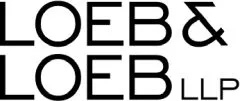- within Tax, Consumer Protection and Employment and HR topic(s)
In the current regulatory climate, which includes subpoenas and CIDs being issued by state attorneys general and the Federal Trade Commission, any company that is not focused on how to respond to such regulator intervention is operating carelessly and faces substantial risk and expense, and perhaps, jeopardizes the very existence of the company.
So how do you get ready for the worst? Simple, get your compliance documents together and house them in a single location under the care, custody and supervision of a single "compliance officer." The format we suggest is the "Compliance Notebook."
A well-organized Compliance Notebook can make a huge difference in the time, expense anxiety and ultimate outcome of a regulator's "visit" to your business. The notebook compiles everything you need in one place where you, your lawyers and the regulators can easily access it.
A core component of your Compliance Notebook should be your advertising and marketing substantiation. Every claim your company makes, whether in print, on television or radio, on your website or in your sales scripts and emails, should be substantiated by documented facts that support that claim. Start by creating a spreadsheet and listing each of your company's advertising claims in the left column. Then create a second column to the right of the "Claims" column and list all facts that support each claim. Then create a third column and put the letter of the tab in your notebook where the documentation is located that supports each claim.
As an example, to support a claim that your company typically negotiates settlements in the range of 40% to 60% of the amount of the client's debt at the time of the settlement, there should be a tab in your Compliance Notebook that includes a recent report generated by your settlement department listing the range and average all of your company's settlements.
Your Compliance Notebook should also include separate sections that include your compliance policies, training materials (including training test results), underwriting guidelines and compliance call procedures and scripts. The notebook should also contain statistical data that tracks client retention rates, consumers that failed your company's underwriting standards and consumers that withdrew from the program. In addition, exit interview scripts and the responses obtained, reflecting the reasons why clients have withdrawn from the program, should be included in the notebook.
Just as important as assembling the Compliance Notebook in the first place is keeping it up-to-date. Every time the company changes its advertising in any form, the firm's compliance director should be charged with updating the notebook. Ideally, the firm's culture will evolve so that forethought will be given to documenting new advertising statements in the Compliance Notebook BEFORE the new messages are published. Statements that cannot be documented with verifiable statistical support will be weeded out before they are presented to consumers, heading off legal and regulatory problems before they develop.
Beyond anticipating and preventing advertising and other compliance problems, the benefits of a well-maintained Compliance Notebook include the ability to respond faster and more efficiently to claims and regulatory inquiries, reducing legal costs and often improving results. When clients have the ability to provide their attorneys with a concise, complete and orderly set of documents within hours, as opposed to forwarding multiple sets of disheveled responses over weeks at a time, the savings of both attorney and client time (as well as of their respective staffs) are enormous.
In addition, regulators who generally interpret dilatory CID responses as an indication of deeper-rooted problems are pleasantly surprised by a company that demonstrates the effectiveness of its compliance program by producing responsive documents and information well before the specified deadline. The positive impression created by a well-organized response can lead to a favorable presumption in the mind of the regulator that can avert the detailed scrutiny that a disorganized competitor might receive.
Besides helping companies respond to state and federal regulatory inquiries, the Compliance Notebook format may also facilitate responses to inquiries from the Better Business Bureau, which is currently reviewing a proposal to evaluate debt settlement companies based in part on their ability to demonstrate their use of effective compliance procedures. If the initiative is approved, an added benefit for companies that maintain a complete and wellorganized Compliance Notebook is that they may be wellpositioned to receive a higher rating from the BBB.
This article first appeared in the July 2009 USOBA The Bottom Line Newsletter.
The content of this article is intended to provide a general guide to the subject matter. Specialist advice should be sought about your specific circumstances.


